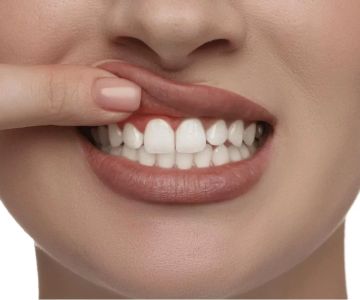Transitioning from Tube Feeding to an Oral Diet: What You Need to Know
Transitioning from tube feeding to an oral diet can be a challenging and complex process for patients recovering from illness or surgery. This change often marks a significant milestone in a patient’s recovery, symbolizing their ability to begin taking in nutrition through traditional means. However, it also requires careful planning, monitoring, and adjustments to ensure a successful transition. In this article, we will explore the important aspects of transitioning from tube feeding to an oral diet, addressing common challenges, tips for success, and the role of healthcare professionals in this process.
1. Understanding the Need for Tube Feeding
Before diving into the transition, it’s important to understand why tube feeding might be necessary in the first place. Tube feeding is often prescribed for patients who are unable to consume food orally due to medical conditions such as neurological disorders, swallowing difficulties, or severe malnutrition. It ensures that patients receive the essential nutrients, fluids, and medications they need to recover and stay healthy. While tube feeding is a vital life-saving tool, it is typically viewed as a temporary solution, and once the patient’s condition improves, the goal is to transition to an oral diet.
For many, the transition from tube feeding to an oral diet is a sign of improvement, as it indicates that the patient is now able to safely swallow food and beverages on their own. However, this process is not always straightforward, as it involves addressing both physical and psychological aspects of eating, as well as careful monitoring of nutritional intake.
2. Assessing the Readiness for Transition
Before making the switch from tube feeding to an oral diet, healthcare providers will assess the patient's readiness for this transition. Several factors need to be considered, including the patient's ability to swallow safely, the status of their gastrointestinal system, and their overall health condition. A speech therapist or a nutritionist will typically play a key role in evaluating whether the patient can safely consume food orally without risk of aspiration (food or liquid entering the airway, which can lead to pneumonia or choking).
In addition to these medical evaluations, patients may need to undergo exercises and training to strengthen their swallowing muscles. This may involve physical therapy or working with a speech therapist to learn proper swallowing techniques. The goal is to ensure that the patient can safely handle different textures and types of food, progressing from liquids to soft solids and eventually to a regular diet.
3. Gradual Introduction of Oral Foods
Once the healthcare team has determined that the patient is ready to start eating orally, the process of reintroducing foods typically begins slowly. It’s important to start with liquid or pureed foods to minimize the risk of aspiration or choking. Gradually, as the patient becomes more comfortable and capable of swallowing, more solid foods can be introduced. This staged approach allows the patient’s body to adapt to the process of digestion and absorption through the mouth again.
The reintroduction of food should be closely monitored, with healthcare providers paying attention to any signs of discomfort or difficulty swallowing. It’s also important to observe the patient’s weight and nutritional intake to ensure they are receiving the appropriate amount of calories, protein, and other nutrients. During this phase, it’s common for patients to experience a slower appetite recovery, which is why oral nutrition is typically supplemented with tube feeding until a steady oral intake is achieved.
4. Managing the Emotional and Psychological Aspects
For many patients, transitioning from tube feeding to an oral diet is not just a physical challenge but an emotional and psychological one as well. The process of eating orally again can bring up feelings of fear, anxiety, and frustration, especially if the patient has been reliant on tube feeding for a long time. Patients may feel nervous about swallowing or may develop negative associations with eating due to previous difficulties or discomforts associated with tube feeding.
To help ease the emotional challenges, it is important to provide psychological support through counseling or therapy. Encouraging patients and their families to take small, manageable steps toward a full oral diet can help build confidence. The involvement of a dietitian or speech therapist who can guide and support the patient’s recovery is also essential to ensure the process remains smooth and gradual.
5. The Role of Family and Caregivers in the Transition
Caregivers and family members play a vital role in supporting the patient through the transition from tube feeding to an oral diet. They can provide emotional support, ensure that the patient follows the recommended diet plan, and assist with meal preparation and feeding if necessary. Caregivers should also be vigilant for any signs of difficulty or discomfort during the eating process, and immediately notify the healthcare team if there are concerns.
In addition to providing physical support, family members and caregivers should be educated on the proper techniques for feeding, as well as on monitoring the patient’s nutritional intake. This may include learning how to prepare appropriate foods, how to adjust food textures, and how to handle feeding equipment and tools.
6. Addressing Potential Risks and Complications
While transitioning to an oral diet can be a positive and rewarding step in recovery, it’s important to be aware of potential risks and complications. One of the biggest concerns during this transition is the risk of aspiration, which can lead to pneumonia and other respiratory complications. Additionally, some patients may have difficulty regaining a normal appetite, leading to issues with malnutrition or weight loss. Ensuring that the patient receives adequate calories and nutrition during the transition period is crucial for preventing these complications.
It’s also important to monitor the patient for any signs of dehydration or difficulty with digestion. Since their gastrointestinal system has been underused for a period of time, the body may need time to adjust to the process of breaking down and absorbing food again. Monitoring fluid intake, as well as the patient’s overall energy levels, will help to ensure that the transition remains smooth and effective.
Conclusion: A Holistic Approach to Successful Transition
The transition from tube feeding to an oral diet is a complex process that requires careful attention to both physical and emotional factors. With the support of healthcare professionals, caregivers, and family members, patients can gradually reintroduce oral foods and regain their ability to eat independently. By taking a step-by-step approach, addressing potential risks, and providing emotional support, patients can successfully make the transition to an oral diet, ultimately improving their quality of life and overall health.
SEO Title: When Transitioning from Tube Feeding to an Oral Diet: A GuideSEO Keywords: tube feeding, oral diet, transitioning to oral diet, nutrition recovery, feeding difficultiesSEO Description: Learn about the process of transitioning from tube feeding to an oral diet, including steps, challenges, and the support needed for a successful transition.






 Innovative Oral Surgery & Dental Implants4.0 (591 review)
Innovative Oral Surgery & Dental Implants4.0 (591 review) Distinctive Smiles of Dublin4.0 (399 review)
Distinctive Smiles of Dublin4.0 (399 review) Advanced Endodontics4.0 (71 review)
Advanced Endodontics4.0 (71 review) AZ Family & Kid's Dental4.0 (146 review)
AZ Family & Kid's Dental4.0 (146 review) Stephen M Weisner DMD5.0 (7 review)
Stephen M Weisner DMD5.0 (7 review) Dr. Kenneth J. Kalil0.0 (0 review)
Dr. Kenneth J. Kalil0.0 (0 review) The Importance of Oral Health Education During Pregnancy for a Healthy Pregnancy
The Importance of Oral Health Education During Pregnancy for a Healthy Pregnancy Best Tips for Brushing Your Teeth Properly for Healthy Gums: Essential Techniques for Oral Health
Best Tips for Brushing Your Teeth Properly for Healthy Gums: Essential Techniques for Oral Health Why Skipping Dental Checkups Can Lead to Bigger Oral Health Problems
Why Skipping Dental Checkups Can Lead to Bigger Oral Health Problems Advantages of Porcelain Dental Restorations
Advantages of Porcelain Dental Restorations How Can Diabetes Cause Tooth and Gum Problems? Preventing and Managing Oral Health Issues
How Can Diabetes Cause Tooth and Gum Problems? Preventing and Managing Oral Health Issues Healthy Habits for Promoting Good Oral Health and Hygiene: Tips for a Healthy Smile
Healthy Habits for Promoting Good Oral Health and Hygiene: Tips for a Healthy Smile